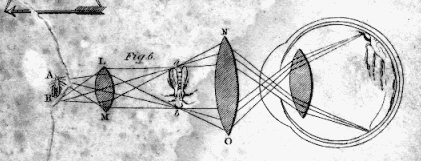Natural Philosophy
Today, a woman writes a physics text that helps to define liberal education. The University of Houston's College of Engineering presents this series about the machines that make our civilization run, and the people whose ingenuity created them.
I've been looking back through 19th-century texts on natural philosophy. That's what finally became physics after the Civil War. The subject of those texts was variable in 1800. They might talk about astronomy, geography, biology -- whatever the author fancied. Then books began agreeing on a body of knowledge. The first place I see that new curriculum is in Jane Marcet's book, Conversations on Natural Philosophy, published in London in 1819.
Marcet wrote conversations between a tutor, Mrs. B, and two young ladies. They talk about materials and motion; Newton's laws; hydraulics; heat, light, and electricity. It's beautiful pedagogy by any measure. New editions came out for 40 years. It was a very popular book. Many of those editions bore the names of male authors to cloak the fact that a woman wrote it. Two of those names were J.L. Blake, and J.L. Comstock. Their contributions were to add homework questions to Marcet's book.
When he wrote his own text in 1830, Comstock changed the tone, but not the content. The easy, conversational style became authoritative and didactic. My 1848 copy belonged to a boy at Phillips Andover Academy -- an influential Eastern prep school then, and still so today. Comstock's book was shaping America. And in it are Marcet's old illustrations -- a little stiffer, a little less elegant -- but the same pictures.
Meanwhile, an English mathematician named Lardner started a huge series of textbooks and handbooks. His 1831 book on mechanics also echoes Marcet. By 1858 young William James was studying Lardner's natural philosophy text.
Lardner still reflected Marcet's organization. He expanded her treatment of machinery, which was a regular part of natural philosophy. In fact, the model steam engine in the natural philosophy course at Glasgow was where Watt first learned about steam.
After the Civil War, writers dropped machines from those texts. When they did, machines dropped out of liberal education as well. The focus shifted to principles, and those principles became a specialty. Still, Marcet's subject layout remained. I still see it clearly in today's physics texts.
But we've changed the name of natural philosophy to physics. We've stopped putting it at the center of liberal education. Marcet knew it belonged there. Since women couldn't go to college in her day, she created a home liberal education course. When she did, she set the pattern for today's physics courses. Today, we forget that natural philosophy belongs at the core of an education. And, as America falls behind in teaching science, we would do well to remember where our physics courses came from.
I'm John Lienhard, at the University of Houston, where we're interested in the way inventive minds work.
(Theme music)
First Elements of Astronomy and Natural Philosophy, London: G. Sael, 1796. (No author is given. The only known copy of this book is in Special Collections, UH Library.)
Marcet, J.H., Conversations on Natural Philosophy. Boston: Lincoln, Edmonds & Co., 1834. (This is one of many later editions of Marcet's book. It bears the name of J.L. Blake on its title page.)
Lardner, D., and Kater, H., Treatise on Mechanics. Philadelphia: Carey and Lea, 1831.
Comstock, J.L., A System of Natural Philosophy. New York: Pratt, Woodford, and Co., 1848.
Lardner, D., Hand-Book of Natural Philosophy. London: Walton and Maberly, 1856. (William James's copy of this book, with his marginal notations, is in the Houghton Library at Harvard University.)
Rolfe, W.J., and Gillet, J.A.,A Handbook of Natural Philosophy. Boston: Woolworth, Ainsworth, & Co., 1868.
Plympton, G.W., and Parker, H.G., A School Compendium of Natural and Experimental Philosophy. New York: Collins & Brother, Publishers, 1871.
Halliday, D., and Resnick, R., Fundamentals of Physics, New York: John Wiley & Sons, Inc., 1970. (This is an early edition of a physics text that is still in use as of this writing in 1994. The chapter headings of this typical modern text are remarkably close to those in Marcet's Conversations on Natural Philosophy.)
See also Engines Episodes 900 and 901.
I am grateful to Barbara Nytes-Baron, Special Collections, and Jeff Fadell, Information Services, both at the UH library, for their fine help in getting at material for this episode. Many of the sources above are available in the UH Special Collections Department.

From Conversations on Natural Philosophy, 1834 ed.
Marcet's image of ocular optics

From A System of Natural Philosophy, 1848
Comstock's version of Marcet's illustration

From A School Compendium of Natural and Experimental Philosophy, 1871
Plympton and Parker's version of the drawing

From Conversations on Natural Philosophy, 1834 ed.
Detail from Marcet's title page and frontispiece

From A School Compendium of Natural and Experimental Philosophy, 1871
Plympton and Parker's version of Marcet's planetary detail